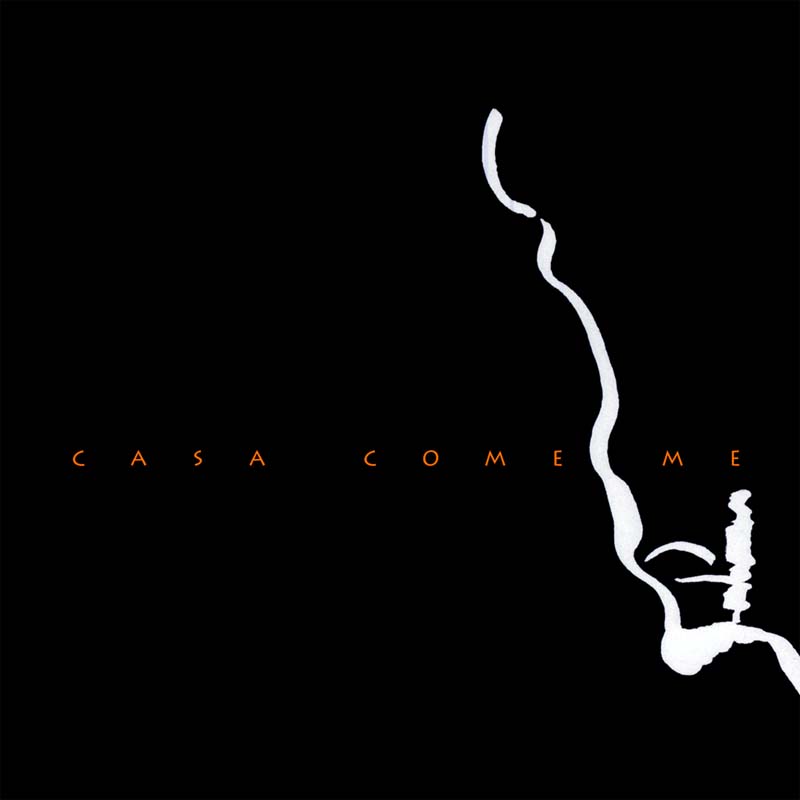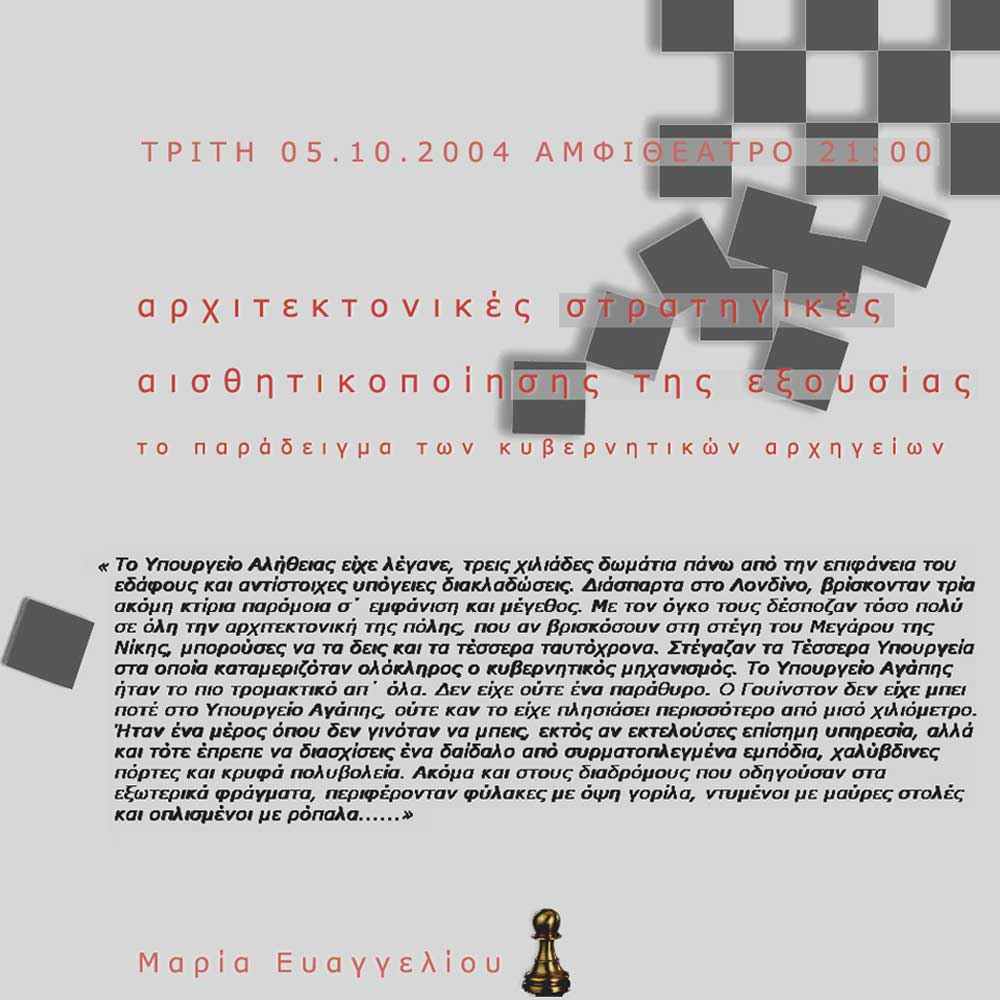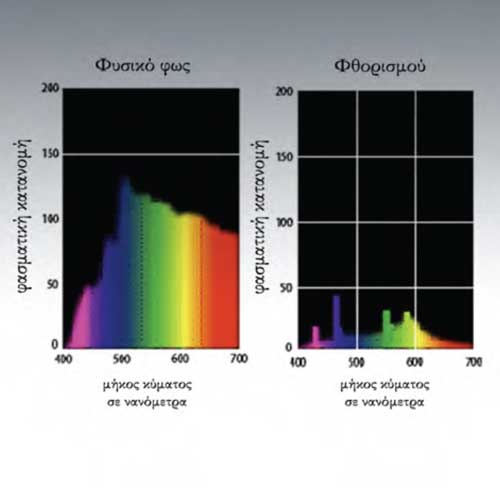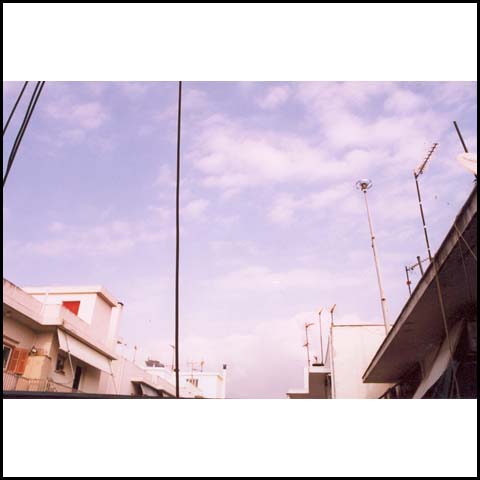

Casa Come Me
The dynamic interdefinition of building and existence.
Mid Thirties on the island of Capri.
An Italian intellectual decides to feed his melancholic desire for space. A man of letters of intense political and cultural activity within a general context of concern.
He decides to construct his architectural portrait. His autobiography imprinted on the rock.
"A house like me"
How such an idea be shaped in architectural language;
How would his human existence be translated in architectural value;
The resulting buildig encompasses the memory of its owner' s existence, how philosophical worries issues and the substancial respect for the natural characteristics of the surrounding scenery. The example of Casa Malaparte gives the opportunity for redefining the constituent implications of habitation, the connection between form and landscape. For redefining architecture as a mechanism of constant conversation with the human existence.
Supervisor: Triantafillidis Giorgos
Reference Number: 25
At the beginning of one (more) attempt to approach Athens one could be tempted by a somehow inverse undertaking. To try to project on the developing city scenarios and unities of concepts about contemporary cities, as if the city itself is being interpreted by the convergence to or divergence from the discourse that represents it. By selecting on the one hand fragments of theories and utopias from different conceptual contexts, which however move around the urban space and on the other hand with a previous estimation about the true fragments which Athens could be consisted of – the city centre and the district, the historical past, the apartment building, limits and division, native and immigrant population/populaces, new structures and non-places – we are attempting a view on what fits and what is left over. The unities of concepts drawn by Rossi, Koolhaas and Castells, as selections from the grate number of discourses, form the conceptual lens with which we read the city. The network, the globalization, the flows, the historicity, the identity, the collective memory, the space of places, the velocity, the generic urbanization, the urban factors, the layering are inscribed and searched for in the city. The tension between what seems to be “interpreted” and what seems to be “left out” reveals not only the continuing dialectics between the practice and the theories with which we handle them but also the permanent fluidity of Athens in the making.
Supervisor: Oreopoulos Philippos
Reference Number: 22


The architectural building considered as a monument is being created in order to express human believes and cogitations. Other times desires and ambitions. Forceful political leaders have plenty of them. Which they attempt to reflect in the architectural expressions. Oftentimes through an appearance of how they would like things to be they seek to persuade the general public that the substance of the authority is like this. A verisimilar visor, an image. This constitutes the beautification of the authority. The architecture being transformed into a mean that will lend the authority a character of beautification. The force of image, symbols and space’s sensation are being used. Which are the strategies and which the architectural elements? Three examples of governmental headquarters will underlie this questioning. The palace of Louis XIV in Versailles, Reich chancellery for Hitler and new chancellery in reunified Berlin are being viewed through the examination of architectural elements being expressions of the ideological content they are called to symbolize. The comparison between past and present, absolute and dialectical regimes.
Supervisor: Fyga Dimitra
File: 13_Euaggeliou_RTPPresentation.pdf
Reference Number: 13
My approach has as aim to investigate the relation of individual with the optical control in different cases transpiring the diachronic relation of observer with the observed object.
The subject is separated in three parts:
In the first part I am reported in the relation of Modernism with elements of space’s optical control. I used the Modernism as base because existed the reason for my activity with the particular subject, as in his questioning it negotiates the transparency and deals with the relation of private, of “inside”, with the landscape and the public space.
The second part constitutes a search in the human behaviour, on the part of optical control, and in the past of the relation individual-observation, however, no with the form of the historical retrospection of above mentioned relation, something that would not interest me to analyze, but more with a report of specific examples that inquires the diachronic relation of observer and observed.Through examples I negotiate various forms of observation and optical control, as observation base on territorial devices (eg panopticon, Japanese and Chinese garden), through the transparency (eg offices buildings), through framing of landscape, through the vitrine (example of Taiwan, Amsterntam), through personal objects, electronic surveillance (cameras, web cams etc), police surveillance, observation of observed object’s representation (camera obscura), observation of the public space, observation of private.
The third part is reported in the modern season and it investigates how much all this disposal for optical control is live in the current city and how it is influenced by structure and by the types of buildings that dominate. Also, becomes report in the modern means of observation, the current “surveillance tools", that can reveal more elements for the private life of citizens.
Supervisor: Papoulias Christos
Reference Number: 20
It is the drawing, what comes to impress the thought, the architectural need, the need for architecture. Already, two paraphrases that resemble to speak for something common and different together. the need, that is satisfied through the production and configuration of space and the need that explains the thought, which speaks and seeks the creation, the architecture. And the drawing here, in order to fit all it can or give birth to new ones. And a space which receives, accomplishing to be characterized architectural. Which is this space? It can be, it can become? The architect, the person - architect, with thoughts and needs, formulated, determined and re-defined, which try fitting in two levels, in conceivable, theoretical and in real, perceptible, material. a dialogue of philosophy and architecture, for an example, in order to emerge questions, without the need of concrete answer, only that text that can become collection of queries, with potential observations and only. Through observation and report a reason to be given for one still dialogue between theory and architecture, which with his turn can become new example, causing new prospects of search and expression.
Supervisor: Oreopoulos Philippos
Reference Number: 19


This research presents the theory that is related with the visual perception and the way that lighting influences human. In particular, this study refers to the function of the visual and perceptual system, that is based on the principles of perceptual constancy, and also points that through these factors lighting conditions affect the person’s physiology and psychology. The study focus in the effect of daylighting and refers to researches that examine how lighting conditions modify the feeling, the behavior and the performance of individuals .
In the next part of this paper there is a reference about the techniques of representation of space. This reference begins with a historical review in the tools of representation in the past.the pastpresantation spaces The report continuous by looking into the contemporary tools and software of 3 dimensional visualization/simulation and are mentioned ways that images can be produced as the result of a rendering procedure. It is also pointed here the importance of utilisation of simulation software to achieve accuracy in the architectural visualisation, how these softwares operate, and it is also examined the quality of the results and their faculty to provide reliable information on the behavior of light at his interaction with masses and the surfaces of the objects. Still, this study examins the potentiality of tools of representation for the precise estimation of distribution of light and luminance.
In the end, there are presented simulations of spaces with real distribution of luminance and it’s taking place an attempt of comparison between real and rendered images and between simulation softwares, based on the degree of accuracy in the process of producing rendered images.
Supervisor: Tsangrassoulis Aris
File: 02_Antwniou_RTPPresentation.pdf
Reference Number: 2


